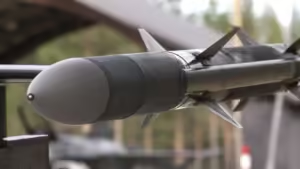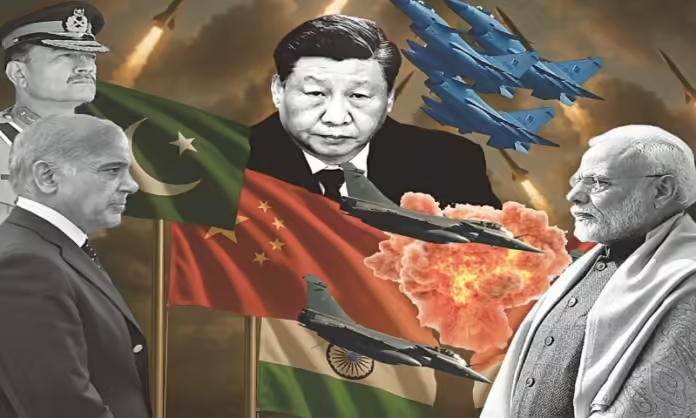Pakistan Acquires U.S. Missiles, Bangladesh Looks to Buy Chinese Jets Amid South Asian Power Shift
In a development that has sent shockwaves across New Delhi’s strategic corridors, Pakistan is set to receive AIM-120 Advanced Medium-Range Air-to-Air Missiles (AMRAAMs) from the United States, while Bangladesh has finalized plans to purchase 20 Chinese J-10C fighter jets. These twin developments mark a new and potentially destabilizing phase in South Asia’s regional power dynamics — one that significantly complicates India’s security landscape.
For India, still nursing its defeat in the recent war with Pakistan in May, this shifting trilateral alignment between Pakistan, China, and Bangladesh is not only a geopolitical nuisance but an outright regional security challenge.
Pakistan Bolsters Air Dominance with U.S. Missiles
Reportedly, the American defence behemoth Raytheon has included Pakistan in its list of purchasers of AIM-120 missiles after a recent contract amendment. These AMRAAMs are compatible with Pakistan’s fleet of F-16 fighters — a pair-up that proved to be lethal in the 2019 Operation Swift Retort, when the Pakistan Air Force (PAF) destroyed two Indian aircraft that had crossed its borders.

With the fresh supply of missiles, Islamabad’s air combat strength is likely to get a huge boost. Defence analysts say this decision indicates the increased warmth in ties between Islamabad and Washington, which had lost steam in recent years but now seem to be gaining strategic depth.

Bangladesh’s Big Leap: Chinese J-10C Fighters on the Horizon
While this, the defence modernization process in Bangladesh is picking pace with its move to purchase 20 Chinese-origin J-10C multirole combat aircraft in a deal worth around $2.2 billion. The deal includes not only the aircraft but also training, maintenance, and logistics support.
The acquisition will significantly supplement the Bangladesh Air Force’s existing fleet of 212 aircraft, of which 44 are fighter planes — the majority being older F-7s also imported from China. The J-10Cs, with their upgraded avionics and air-to-air missiles, will usher Dhaka’s aerial capabilities into a new generation of sophistication and deterrence.

The acquisition tightens further China’s hold on Bangladesh as its primary defence partner and indicates Dhaka’s increasing alignment with Beijing’s strategic hemisphere.
The Rising Pakistan-China-Bangladesh Axis
Pakistan and Bangladesh are both key actors in China’s ambitious Belt and Road Initiative (BRI), which is aimed at linking Asia, Europe, and Africa through extensive webs of trade and infrastructure. Aside from economic corridors, the BRI has come to increasingly become a platform for Beijing to intensify its defence and diplomatic footprint across Asia.
Recent trilateral sessions between senior Pakistani, Bangladeshi, and Chinese officials have underscored a common vision for greater cooperation in trade, investment, education, maritime issues, and — most significantly — security.
For New Delhi, this alignment constitutes a significant realignment of the regional balance of power. The coincidence of military, economic, and diplomatic interests of these three countries creates a long-term strategic conundrum for India, which is trying to hold on to its clout as Chinese involvement in the region deepens.
India’s Growing Strategic Isolation
India’s waning influence in South Asia, compounded by recent diplomatic and military failures, is now more clearly visible than ever. While Pakistan is bolstering its U.S. defence relationships and Bangladesh is forging closer collaboration with China, New Delhi is threatened with being surrounded by countries aligned — directly or indirectly — with Beijing’s strategic agendas.
Analysts caution that this triple challenge may force India to review its foreign policy, bolster defence modernization, and restore confidence with its neighbours. If not, it may leave India more exposed to regional realignments over which it has little or no control.
A New Era of Regional Realignment
The simultaneous U.S.-Pakistan and China-Bangladesh defence initiatives create a watershed in South Asian geopolitics. Although Islamabad’s missile modernization and Dhaka’s purchase of jets indicate increased military assertiveness, India’s failure to counter the initiatives indicates an alarming decline in its regional influence.
As Pakistan, China, and Bangladesh close in on the strategic triangle, India has an imperative to revise its diplomatic stance and military readiness — before the regional balance of power shifts irretrievably.
Stay tuned to Pakistan Updates for more news and updates.




